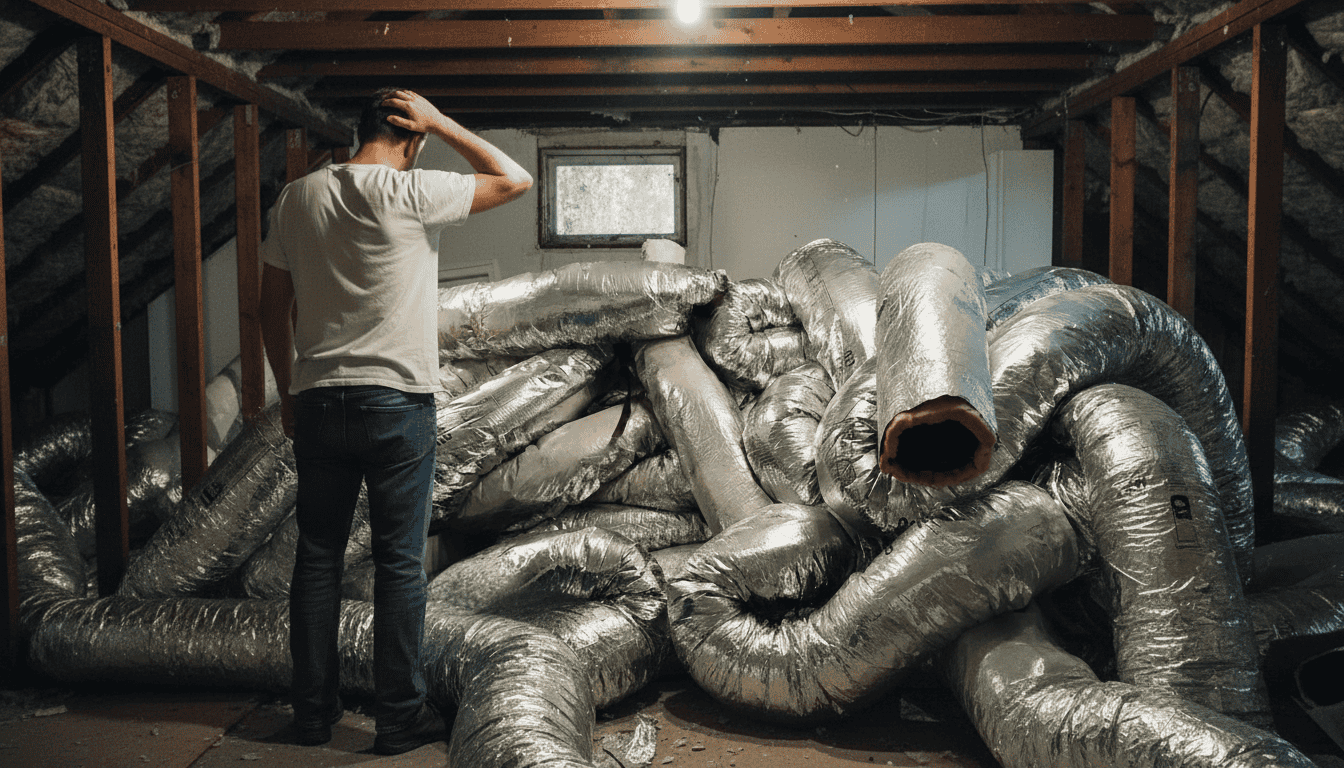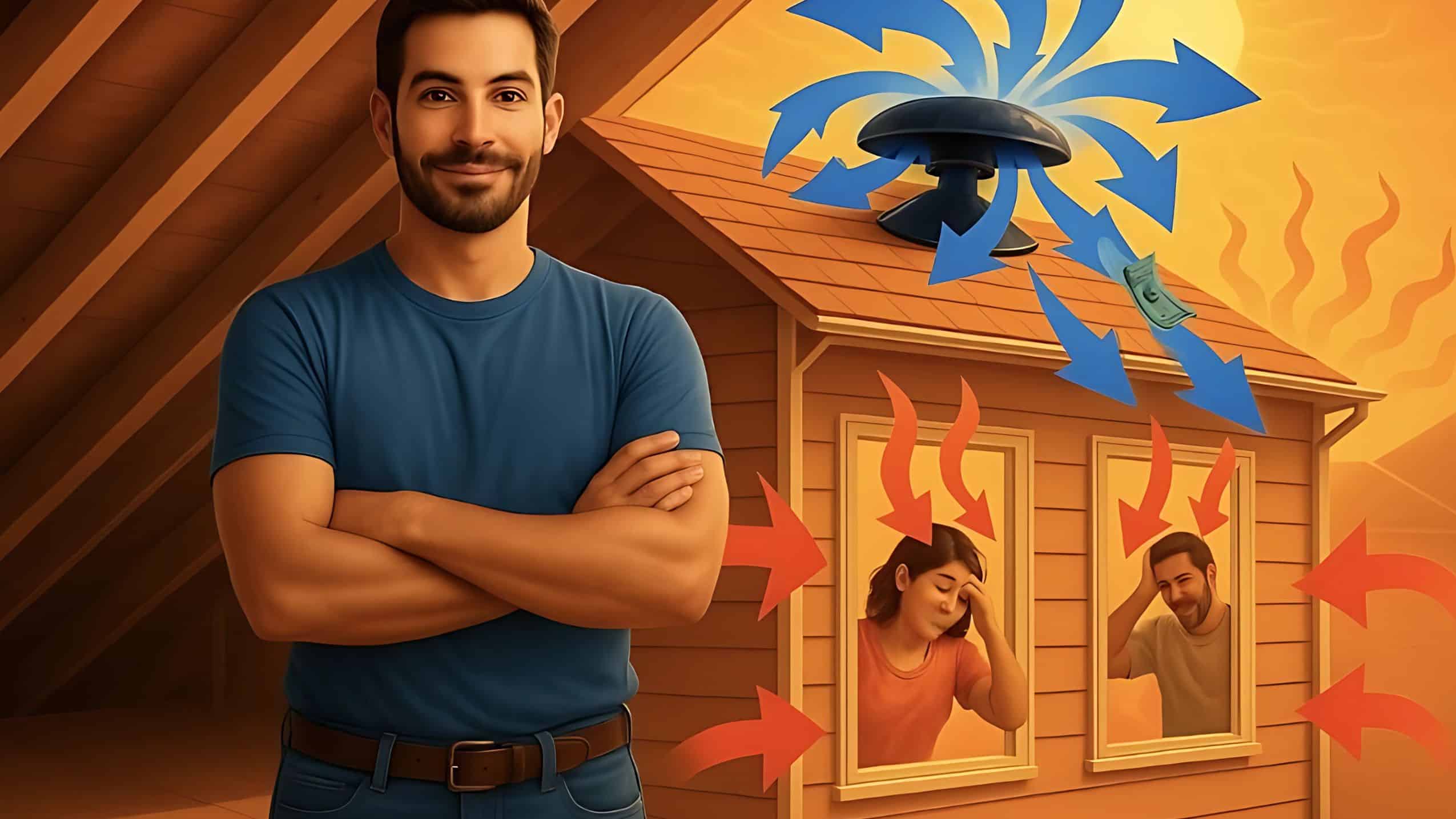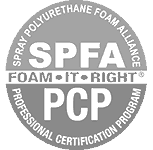Unsurprisingly, even 30 years after the local introduction of polyurethane spray-applied Foam, many people in Louisiana and the Gulf South feel that spray-foaming an attic has many frightening consequences. When attics receive poor foam installation treatment, contractors neglect industry best practices and the outcome looks like what they do in this blog; it is an ugly representation of the product and the industry. Therefore, these “enclosed” attics operate improperly and do not achieve all the expected incredible benefits properly completed spray-foamed attic offers.
Another way to put this is that the client didn’t get what they should have gotten for what they paid. However, with 25 years of industry experience, it is frustrating to see the many botched spray foam jobs still occurring. Some 99 centers still feed on many clients’ vulnerabilities due to what yet remains to be a general lack of knowledge about the product and correct application. Or, many contractors themselves need to be made aware of industry best practices. Both usually go hand in hand. Unfortunately, many who get behind the spray foam gun should stick to installing fiberglass.
When The Price “Sounded Right,” Many Did Get What They Paid For
Putting the math to it, a significant percentage of improperly installed spray-foamed attics were, to one degree or another, due to the homeowner hiring one of the many 99 Cent Contractors. The all too common “Blow’ n Go’s.” This applies to subfloor insulation, wall insulation, new construction, gut-job full historic restorations, and occasionally small commercial buildings. In fairness, it also applies to all types of insulation and, of course, the air-conditioning and heating sector in much part. By the time you get to large commercial or industrial, the expectations are on the plans. The subcontractor has already been told what to quote and the application. With larger commercial projects, inspections performed by the more demanding municipality and departmental authorities are anticipated. Architects and engineers are involved. In general, there is much more oversight. In the residential market, however, getting in and out is much easier when no authority requires even the slightest remedial 101 knowledge of the industry—indeed, not best practices, with no oversight and no building code involvement.
Admittedly, however, the correct application of building code to spray Foam is nearly always misunderstood. But this debate is for another day.
Price Should Be The Only Factor Only In The Absence Of Quality And Service
However, the flip side is that many clients who took the 99 Center route were adamant that price was the primary – if not only – factor in deciding which contractor to go with and how fast to sign the contract if ever there was one. I was on the inspection side of Foam many years before installing it. Inspecting other’s work, much of it referred to me from past industry colleagues, admittedly, was one of the most convincing reasons to start offering this “misunderstood” insulation as a product/service. At that time, there was no shortage of “fix-it” jobs, and they were flooding the market.
Many homeowners exhaustedly deal with shotty installations till today, as they feel it’s good enough to get by. “Well, yes, the attic is humid, and the ducts are sweating,” many say, and they no longer want to pay to repair it to a properly performing conditioned envelope. “What’s done is done, I suppose it’s fine.” “It’ll cost more to fix it than it did to install it.”
The most commonly seen examples of botched spray-foamed attic jobs are:
Sweating ductwork and air-handler
Overall feeling of dampness
Over 90 degrees
The top plate is exposed
Foam is adhering to the pre-existing ceiling floor fiberglass or cellulose
Attic ventilation openings, such as gable vents, soffits, and wind turbines, are not properly covered
The foam ends at and adheres to attic floor decking at the perimeter
There is insulation on the ceiling floor
Lack of consistency in foam thickness.
Other potential concerns to be aware of:
Gas furnace located in the attic with no make-up combustion oxygen. This excludes sealed combustion gas furnaces.
Improper type of make-up combination air.
A foamed roofline over an unconditioned garage without an air seal on the garage ceiling separating it from the foamed attic
Porches and overhangs exposed
Open cell adhered directly to aged or original weatherboards without a low-perm-rated sheathing or other appropriate blocking separating the two.
Visually see exterior walls from the attic looking down through drop-down ceiling areas around the home’s perimeter.
Exposed brick fire chimneys in the attic
Foam in HVAC drip pan
No observable conditioned supply-air open ducting into the attic
Different from the first list of concerns, which most likely are more serious threats that may require immediate attention, the latter checklist may or may not be of concern based on simple observation or an untrained industry expert eye. Some of these items rely on the characteristics of or within the attic before or after the installation. They may also depend on the “intention” of enclosing one’s attic space.
We Should’ve Moved On From the Polyurethane Foam Infancy Stage By Now (But Haven’t)
With the turn of the New Century, 2000, spray polyurethane foam entered our Greater New Orleans market, up to Baton Rouge and around the Northshore. Back then, three companies were spraying. One got out of the installation side of the business and more into polyurethane foam chemistry and providing products and services to contractors. Another went out of business. And, let’s just say, the other changes its tax identification number on occasion.
The 99 Cent Contractors remain in full force. Price points often play a role like anything else in the residential construction and retrofit industry. Far from true, the highest bid does not always correlate to the best product/service. But almost always, if the price is too reasonable (low), especially for spray foam, there is a correlating reason. Occasionally, all of us will hear the “Act now while supplies last, don’t miss out on this incredible deal” tactic in the perfect advertising spot at the right time of day. In the world of spray foam, if it sounds too good to be true, then someone, whether it be you or the client before you, got screwed.
Why So Hard To Achieve A Proper Enclosed Spray-Foamed Attic?
Maybe the Building Science of a correct job is too difficult for many contractors to comprehend. Some basic math and science must be assessed while quoting and installing. However, if the contractor doesn’t understand the science, then they, as well, can not correctly inform the buyer. It may not even be intentional. There are many variables to consider when installing foam versus cellulose or fiberglass on the attic floor. Maybe our current economy and well-understated inflation rate make it too challenging for the contractor to afford the materials and quality labor for the homeowner to afford a proper job. (Do you know anybody who wants to work?). Regardless of the reason, from which viewpoint, and from what or if any over-sight, the common thread is that the demand for excellence is weak at best 25 years after foam blessed us with its presence—decades after the rest of the industrialized world.
Many Argue, “We Need an Industry Standard Then.”
Basic 101 trade-schooling is an excellent idea for industry. After all, the usual spray foam contractor is not someone who couldn’t wait to grow up to become an energy efficiency expert or a trained building science professional. Also commonly heard from many in the foam endeavor is, “Spray foam is expensive! I’m sick of making money for my boss. I can do this! I’m going to get my own machine and make bank!” This was a familiar thought process after Hurricane Katrina’s destruction. Many only later realized that spray foam is “expensive” for a reason. This epiphany led to some unscrupulous foam guys manipulating their product or installation to sustain their business. This philosophy then comes full circle to them preying on those who decide solely on price rather than competing with other professionals on quality, service, and knowledge.
Download The BSC Vented & Sealed Attics
A Standard Has Yet Ever To Come
Think about windows, roofing, water heaters, installing sheetrock, and even HVAC mechanical equipment. There are pretty simple industry best practices to adhere to in coinciding industries. “Just follow the instruction manual.” (Although this, too, is becoming a rare talent these days rather than the once-assume norm). Many laypeople better understand how installations should be done these days. YouTube is a leader in education. Finally, some of these trades’ installations come under the umbrella of code enforcement. Admittedly, luck, the day, time of day, and whether the Saints won or lost the day before may play a role if you get a proper and thorough inspection.
The more knowledgeable and ethical spray foam contractors mostly agree on best practices but with some exceptions. However, some opposing trades – namely mechanical contractors – have their own opinions, as there should be a “partnership” between the two trades. This relationship can too complicate the subject. And somewhere in between the lines, you have building code. However, building code should sometimes be taken with a massive rock of salt. After all, some building codes directly conflict with each other. So, one of them must be wrong.
We Do Have One Great Thing Going For Us!
In response to so much industry confusion, misunderstandings, and desire for improved knowledge, in 2015, www.selacaci.org was founded. This coalition of A/C industry leaders offers high-quality educational opportunities for HVAC-related industry members. Although the organization’s central focus is on the air-conditioning and heating industry, this trade is commonly affected by or affects other construction trades. Regarding the relationship between HVAC and spray foam, SELACACI is a much-needed group of professionals striving to understand the industry better. This association deserves huge industry kudos, bringing several trades together into one room.
We Have Issues Because Spray Foam Is So New. NOT!
Now that there is the history and list of concerns, reasons, and comments above, we have to admit what, here in the Great South, we are criticized for by so many neighboring states (mostly above). We are years (decades in the spray foam world) behind the rest of the nation in advanced building practices, which is another reason we continue to have these problems.
Spray Foam Did Nothing Wrong
Spray foam has been around for well over a century. True, in a very primitive form as we use it today. But the 101 from 100 years ago hasn’t changed all that much. A spray-foamed roofline is not making your attic sweat. It didn’t 100 years ago, it’s not now. Spray foaming the roofline is not creating a moisture issue. It didn’t 100 years ago, it’s not now. On and on. Spray foam is not some mysterious voodoo product that makes bad things happen. Install anything incorrectly and not to manufacturer specifications, and one is taking a risk; some are smaller. And some risks can result in consequences that are umpteen times worse than improperly-installed polyurethane foam.
Solution
Regardless of the industry, no contractor can state with 100% certainty that nothing will go wrong. Most of us live in the real world. The best solution is to ask the bidding contractor for pictures, videos, and references. Perhaps a client who lives in the same neighborhood. Better yet, ask to show up to a project the contractor is currently working on.
Also, keep in mind that mistakes happen. This doesn’t apply to a botched job. It’s a mistake. There may have been an oversight on something during the installation. Weather conditions can play a significant role in a successful application. The time of year should be more cautious depending on the project. The best foamers take many precautions. But things can still happen. As long as the contractor’s response time is reasonable. The concern is heard and understood. The resolution is carried out. If the end result of the repair matches the initial expectation and contract, then you have an excellent contractor.
Finally, don’t act now while supplies last. Missing out on this incredible offer may prevent an attic from going up in vapor and the ceiling from falling in under the weight of condensation.



















